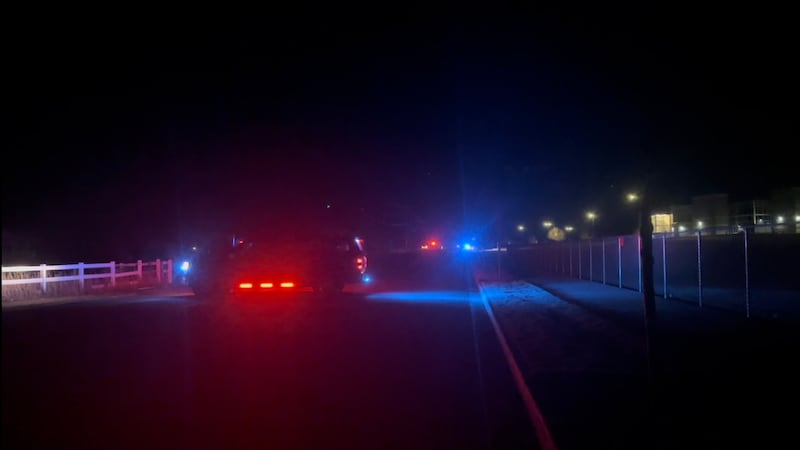Revisiting the trial of Diamondfield Jack
TWIN FALLS, Idaho (KMVT/KSVT) — It’s one of Idaho’s most notorious Wild West stories that continues to be debated to this day, Diamondfield Jack. Almost larger-than-life, Diamondfield Jack got his start Northeast of the Magic Valley towards Boise in the small mining town, Silver City. Before being known as “Diamondfield Jack” he was Jackson Lee Davis.
“We don’t know a lot about his early years. His early years are kind of shrouded in mystery.” Assistant Professor of History at the College of Southern Idaho, Justin Vipperman said. What is known is that during his time at Silver City he overhears a rumor that there are diamonds in the mountains surrounding the town.
“He won’t stop talking about [the] diamonds, and so they start calling him as, kind of a pejorative term, ‘Diamondfield,” Mr. Vipperman explained.
It wasn’t long before he moved from Silver City to the Magic Valley, where there was a conflict brewing down in the South Hills.
“We’re having a real big problem with the cattlemen and the sheepmen,” Mr. Vipperman said. “Neither one of them wanted to kind of give up the area that they were in,” Public Historian at the Twin Falls Public Library, Jennifer Hills explained. Thus, a deadline was established to keep conflict between the sheepherders and the cattlemen to a minimum; to help prevent the land from being overgrazed. To help patrol this deadline, the Sparks Herald Company, based out of Nevada, brought on the perfect man for the job, Diamondfield Jack. “Diamondfield Jack is hired as one of those guys. Partly because he’s so larger than life. He’s a guy that would run his mouth,” Mr. Vipperman said.
He was hired because he would run his mouth about living the life of a Wild West Outlaw. He got the chance to prove it, but because of this tendency historians have had a hard time ascertaining the truth. The first point of contention is the story of William Tillman, the first man Diamondfield shot while patrolling the deadline.
“They both are told, but one [story] is defending the deadline and William Tillman comes to him, they have a standoff [and] Diamondfield pulls his gun in the shoulder,” Mr. Vipperman explained, “There’s the other [story], where William Tillman was coming after Diamondfield Jack, and so Jack went into his camp and shot William Tillman in the shoulder.” While the reasoning for the shooting is unclear whether it was for defense of land or defense of self, this pushed Diamondfield Jack to flee the state of Idaho entirely. “It might have been even a surprise to him how quickly that kind of something might escalate because he did kind of hide out for a little while because he was afraid that if he had killed him, he would be liable,” Ms. Hills said.
Diamondfield fled to Nevada but didn’t necessarily keep quiet about his tales.
“He is in Nevada running his mouth, he takes off to Nevada [and] we see him in several different places in Nevada for roughly 6 months,” Mr. Vipperman said.
During his time in Nevada, he creates a mythos of himself; he told stories of his exploits which involved him shooting and/or killing people. That laid the foundation for one of Idaho’s most contentious legal cases.
When Diamondfield returned from Nevada he began the process of removing the sheepmen that had moved too far into the deadline.
“One of the reasons that John Sparks [wanted] him to come back is because they’d heard that multiple sheep camps had moved West of the deadline,” Mr. Vipperman explained. They found multiple sheep camps west of the small unincorporated town, Rogerson; in a region known as Deep Creek. Once they had been found, Diamondfield got to work taking down each of the camps one by one; shortly after two men, Daniel Cummings and John Wilson, were found dead.
“These two men in their sheep wagon had a run-in with somebody with the Sparks Herald outfit and ended up dead. I think it was a few days before their bodies were actually discovered that was an issue,” Ms. Hills explained. There were a few pieces of evidence that directly linked Diamondfield Jack to these murders and his specific style of shooting. “He’s known to use a 44-caliber cartridge, in a 45-caliber gun,” Mr. Vipperman said.
The bigger issue was Diamondfield Jack’s tendency to brag. “The problem was Jack Davis’s big mouth and he had already caused a lot of…Rancor between himself and some of these sheepmen that he was coming contact with,” Ms. Hills said.
It was these two facts that caused Diamondfield to flee the state of Idaho once again. “They are immediately like ‘It’s Diamondfield Jack that’s the guy who did this.’ Diamondfield takes off to Nevada, through Nevada, and he makes it as far as Yuma, Arizona,” Mr. Vipperman explained. Diamondfield was caught in Yuma and extradited to Idaho where he was put in an Albion jail awaiting his trial. More problems would set the trial back when two men lied under oath about the whereabouts of Diamondfield Jack.
“James Bauer and Jeff Gray, they both lie under oath saying that they were with Diamondfield Jack at the time and that he couldn’t have done this. Later on, they’re going to confess to the murders,” Mr. Vipperman said. Despite both men confessing to the murders the trial was set to go ahead. “He’s convicted pretty quickly on circumstantial evidence,” Ms. Hills said.
Diamondfield Jack was sentenced to hang. He could see the location, for over a year, in which he would be hung until dead from his jail cell. The other two men were let go.
“The two guys that we believe actually did commit the crime signed confessions, and at first that wasn’t enough for a judge to overturn the conviction. The county actually brought those two guys to trial, and then they were exonerated as acting in self-defense,” Ms. Hills explained.
This began the period of appeals that lasted from 1897 to 1902. “He’s always at having a death sentence until 1901 when on a last appeal, they commute his sentence from death sentence to life in prison,” Mr. Vipperman explained. In 1902, his employer John Sparks, of the Sparks Herald Company, was now the Governor of Nevada and petitioned the Governor of Idaho to pardon Diamondfield. “He’s let out of prison. However, that first conviction still stands; that he murdered the two sheep men…There’s not enough evidence to suggest that James Bauer and Jeff Gray did this at all, and there’s actually not enough evidence for Diamondfield Jack,” Mr. Vipperman said.
New evidence has been found that could implicate Diamondfield in those murders by history enthusiast Max Black. “He goes out and he finds this place on private property that has the space. He asked for permission to go out there with a metal detector, and he starts metal detecting around, and he finds fragments of two bullets from a 45 cartridge and a 45 bullet,” Mr. Vipperman explained, “When they start doing ballistic testing, they find that they were both shot out of a 44,” Mr. Vipperman continued.
This new evidence, if continued to be studied, could implicate Diamondfield Jack in the murder of the sheepmen; but Justin Vipperman remains unconvinced. “I don’t know if I can say that Diamondfield Jack did it, and I’d like to think that he did not, but he could have,” Mr. Vipperman concluded.
Copyright 2024 KMVT. All rights reserved.














